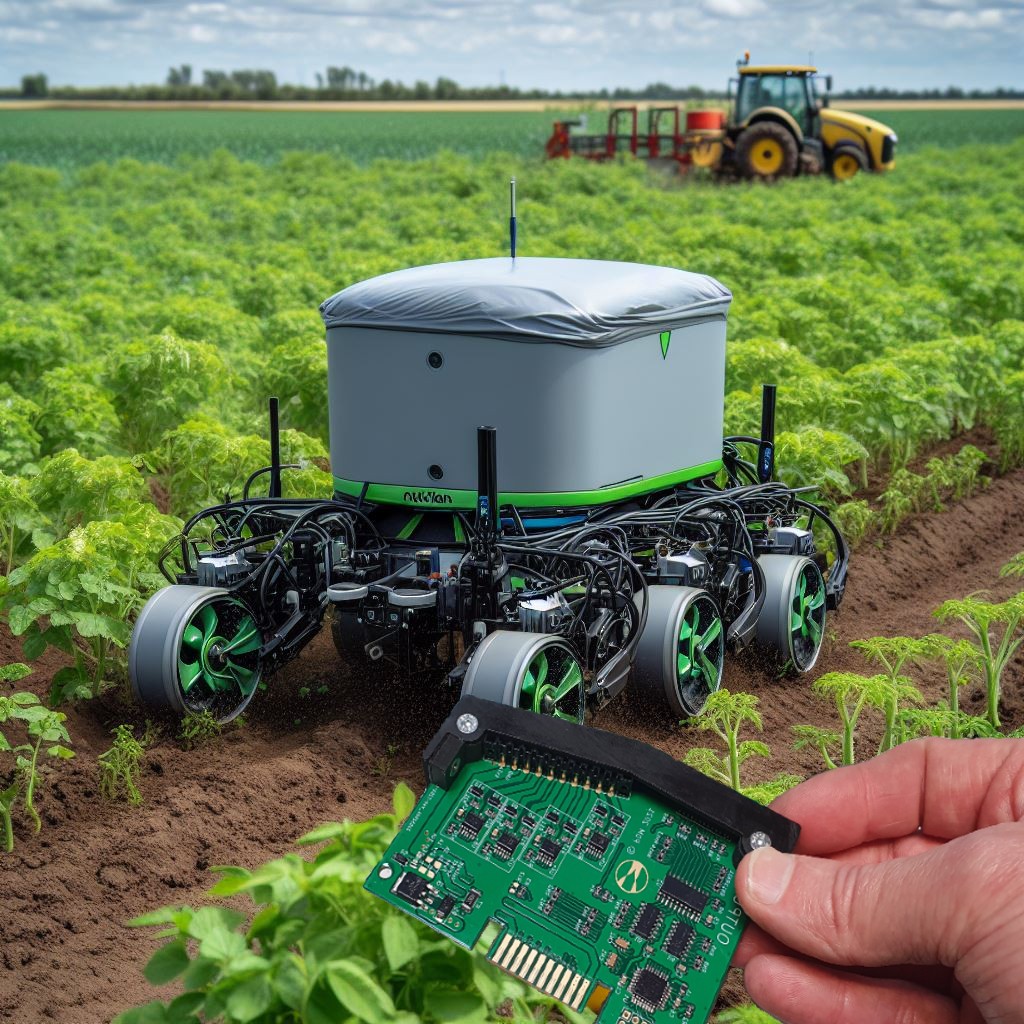Image: real FPGA control card developed by Palmer Automation with AI generated background to foster imagination.
What is an FPGA?
FPGA stands for Field Programable Gate Array. FPGA’s are “silicon chips” that could be used like conventional micro controllers or to perform real time hardware functions or both. The point is they are extremely flexible. Traditional micro controllers or logic function chips “are what they are”, the internal hardware / mechanics of the chip are set on the production line at the time of manufacture. FPGA’s on the other hand are like a blank canvas in the hand of an artist, they can make an FPGA what they want it to be.
How is an FPGA programmed?

First the hardware is designed for the task, a description of the hardware is then uploaded to the FPGA fabric. This describes resistors, logic gates, all the way up to microcontroller hardware. This hardware description is then implemented on the FPGA fabric (Pretty cool Aye!) Then if needed software is uploaded to run on the microcontroller that was created. Or in the case of hardware control there is no software as such, so everything happens real time!
Why use an FPGA over a microcontroller?
That is potentially the wrong question, because an FPGA could be used in combination with a microcontroller or a PC. FPGA’s can have a microcontroller in the fabric also. At Palmer Automation we often imbed a microcontroller into FPGA fabric along with hardware functions that are independent, real-time reporting into the main program.
FPGA’s can monitor and respond in parallel and in hardware real-time, to potentially hundreds of inputs without going to (or waiting for) the main & program loop! This is where the real power of FPGA’s are unlocked.
A traditional micro controller can be programmed to perform many different tasks, however the hardware can’t change. You can select from a large variety of micro controllers to best suit a need, however they can’t be designed perfectly to suit every task.
Motion control:
The outworking of Agri-tech automation is motion, we are not talking about a virtual environment but a real one, doing real things to make real food! Actuators, servo & stepper motors being commonly used in a coordinated / highspeed manner to achieve cleverly conceived physical outcomes.
To control servo & stepper motors, highspeed outputs are required, high speed inputs are also required for encoders and sensors. FPGA’s are excellent at reading sensors and driving many actuators all at the same time.
Generally speaking, microcontrollers or PLC’s (also run by microcontrollers) have a set number of high speed inputs and outputs. If you want to use a PLC for controlling many highspeed motion control operations you will need many high speed cards. So we are talking about relatively big & expensive controllers. Compactness is often important for mobile applications running on Li-ion batteries or solar, so custom FPGA control is an attractive option.
Example:
At Palmer Automation we have implemented from one FPGA chip (the size of your thumbnail) motion control for 12 stepper motors, 6 PWM motors, 6 solenoids, and one servo motor, all in a coordinated high-speed manner, we used this for a customer in the fruit packing industry. For the particular task there was no space for a PLC anyway, since we needed 12x of the above FPGA’s in one machine, so we are talking 156 motors in one machine only a few meters long. We have developed commands that allow us to tell an actuator to be at a certain place at a certain time, and while on the way to that location we can update this to a different time or place and the FPGA’s will recalculate on go to the new place / time and do it perfectly! It has taken some years to develop our FPGA expertise. (we have also developed our own FPGA based PLC that is running in NZ factories performing specialized tasks).
The above example was just not possible with off the shelf controllers.
Agricultural tasks are so varied, it can be very difficult to replace humans who can do and comprehend so much. However there are many high speed repetitive tasks that are ripe for the picking, increasing productivity, reducing pesticides, planting seeds, removing weeds, it’s an exciting time to be involved in agriculture (or aquaculture), the worlds your oyster!

